Andrew Paul Wood – 23 June, 2015
Natalia Saegusa makes clever abstract drawings that belong loosely to the office supplies-fetishism genre that Judy Darragh pioneered and which Eddie Clemens made so memorably his own. Lines build up through emphatic repetition into elaborate formal patterns that frequently develop diffraction pattern nuances where overlapping lines intensify the already popping fluorescent colours.
Christchurch
Amber Wilson / Natalia Saegusa
Leave-taking Like Air / A Line Has Two Lines
2 June - 13 June 2015
Some people think they can tell if a work of art is by a man or a woman. This seems to me extremely unlikely, nor do I think pastel colours and delicacy in art are particularly “feminine”. Does it even matter? And yet people who should know better still trot out these clichés, particularly about women who dare to walk into the machismo Mordor of abstraction (as if Helen Frankenthaler, Lee Krasner, Joan Mitchell, Grace Hartigan and others hadn’t put all that to bed in the middle of last century, sometimes adopting pseudonyms like the women authors of the century before so that their work could be assessed on its own merits in a gender neutral context). Younger and emerging women artists certainly shouldn’t be saddled with that sort of baggage. So let us dispense with and dismiss such nonsense before looking at the work of Amber Wilson and Natalia Saegusa at Christchurch’s Chambers 241 gallery.
Auckland-based Wilson‘s Leave-taking Like Air consists of two bodies of work: exquisitely precise abstract watercolours that remind one a little of pick-n-mix granite cross-sections, or an Ishihara colour-blindness test through their muted earth tones and quite defined compositions (watercolour, often dismissed as the medium of weekend hobbyists, is by far one of the most technically challenging to get right); and oil on canvas all-overs flaunting their flatness in impressionistic blurs and gestural swooshes in pastels.
The former I admire for their intensity and spark: they are highly attractive and pulsate with purpose and focus. The latter does less for me, perhaps tiptoeing up a little too closely to the border of that “zombie formalism” US critic Walter Robinson is always beating his breast about, and to be fair the oils do seem anaemic and lacking context or syntax, especially when you compare them to similar, but infinitely more vivacious and purposeful work by Saskia Leek, for example. Either that or it’s some kind of meta-ironical joke and I don’t get it. The oil Blue Rider - named, no doubt, heavy-handedly for the early twentieth century German avant-garde expressionist group - avoids the fate of becoming a kind of background white noise like most of the others, by virtue of the intense plum, puce and cheeky flash of yellow that give the whole work structure.
I find Natalia Saegusa’s work much more interesting and conceptually satisfying. In part A Line Has Two Lines belongs loosely to the office supplies-fetishism genre that Judy Darragh pioneered and which Eddie Clemens made so memorably his own. The marks are made with highlighter pen on copy paper (coloured and white). These are clever abstract drawings. Lines build up through emphatic repetition into elaborate formal patterns that frequently develop diffraction pattern nuances where overlapping lines intensify the already popping fluorescent colours. In their minimalist white frames the viewer quite forgets how humdrum and mundane the actual materials are; process/time-based conceptual art in lurid high modernist drag is wrung from an obsessive-compulsive doodle to discover all the possibilities and subtleties of two items of stationary.
Tracing the deliberate, controlled lines becomes almost a meditation like the lines raked in the sand of a Zen Buddhist garden or wood grain, defying true flatness with their subtle overlaps and hesitations. The caligraphic lines writhe and twist with a life of their own finding meaning in the mechanical limitations and guaranteed regularity of the highlighter’s straight-edged, angled fibre tip (already I feel myself slipping into another set of cliché assumptions based on Saegusa’s Japanese surname). When the drawings are lined up in a row they make for striking dayglo retinal candy that’s thoughtful as well.
The two artists counterpoint each other well across the Chambers 241 gallery space, striking up a conversation and neutralising each other’s weaknesses, enhancing their strengths. God knows that even in this day and age, it’s hard enough for women to get traction in an art world still in thrall to the cult of the male artist as culture-god-hero, and hopefully with every show like this that hangover dies a little more. Both Wilson and Saegusa clearly have good ideas and know how to work them, but Wilson needs to be cautious that her oils don’t plunge Alice-like down the rabbit hole of low stakes dealer flippability for a high-yield, risk-averse art market.
Andrew Paul Wood
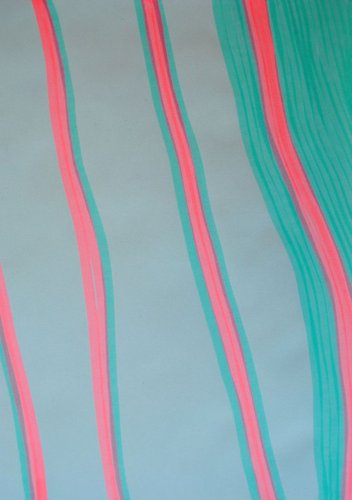
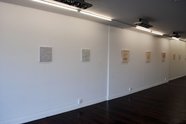
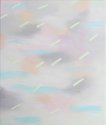

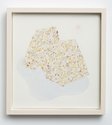

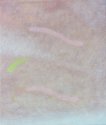
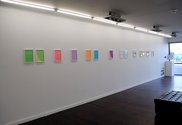




 Advertising in this column
Advertising in this column Two Rooms presents a program of residencies and projects
Two Rooms presents a program of residencies and projects



This Discussion has 0 comments.
Comment
Participate
Register to Participate.
Sign in
Sign in to an existing account.